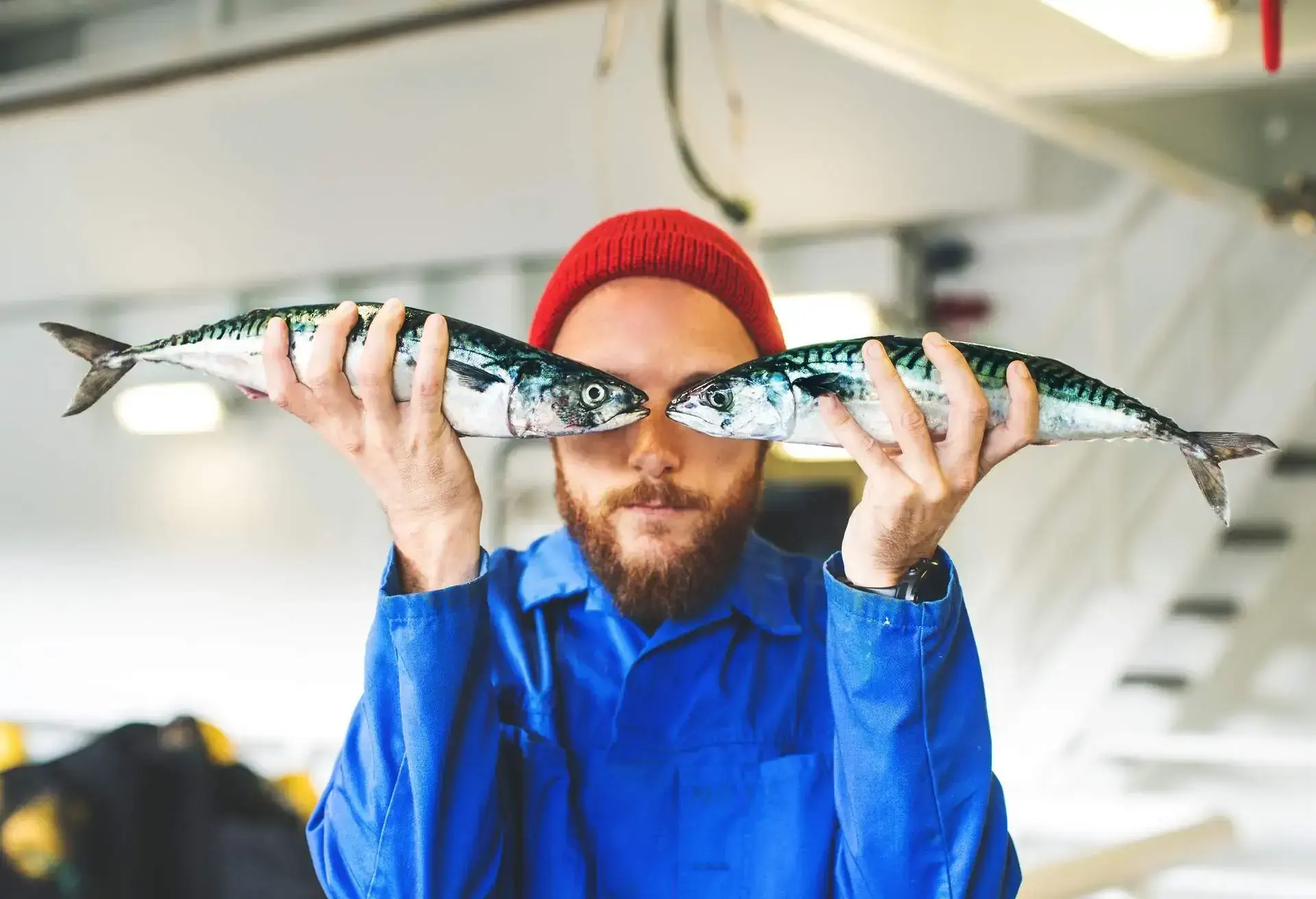Norway may not be known for its cuisine, but it has a lot to offer visitors when it comes to food. Like many other countries, Norwegian cuisine is influenced by the local climate. Norwegian dishes share many similarities with Swedish, Danish, and even Icelandic food, but Norwegian cuisine also features some unique dishes and preparation methods.
Norwegian cuisine features simple, light meals that are still very flavourful. It’s not known for bold flavours—typical Norwegian dishes are often seasoned with butter, salt, and pepper, though forest flavours like lingonberries and juniper are also used often.
Typical Norwegian food is mainly characterised by its abundance of fish and seafood. The king of Norwegian cuisine is salmon, but cod, whale meat, king crab, and game meats like moose or reindeer are also common. Join us on a culinary journey through Norway!
Seafood in Norway
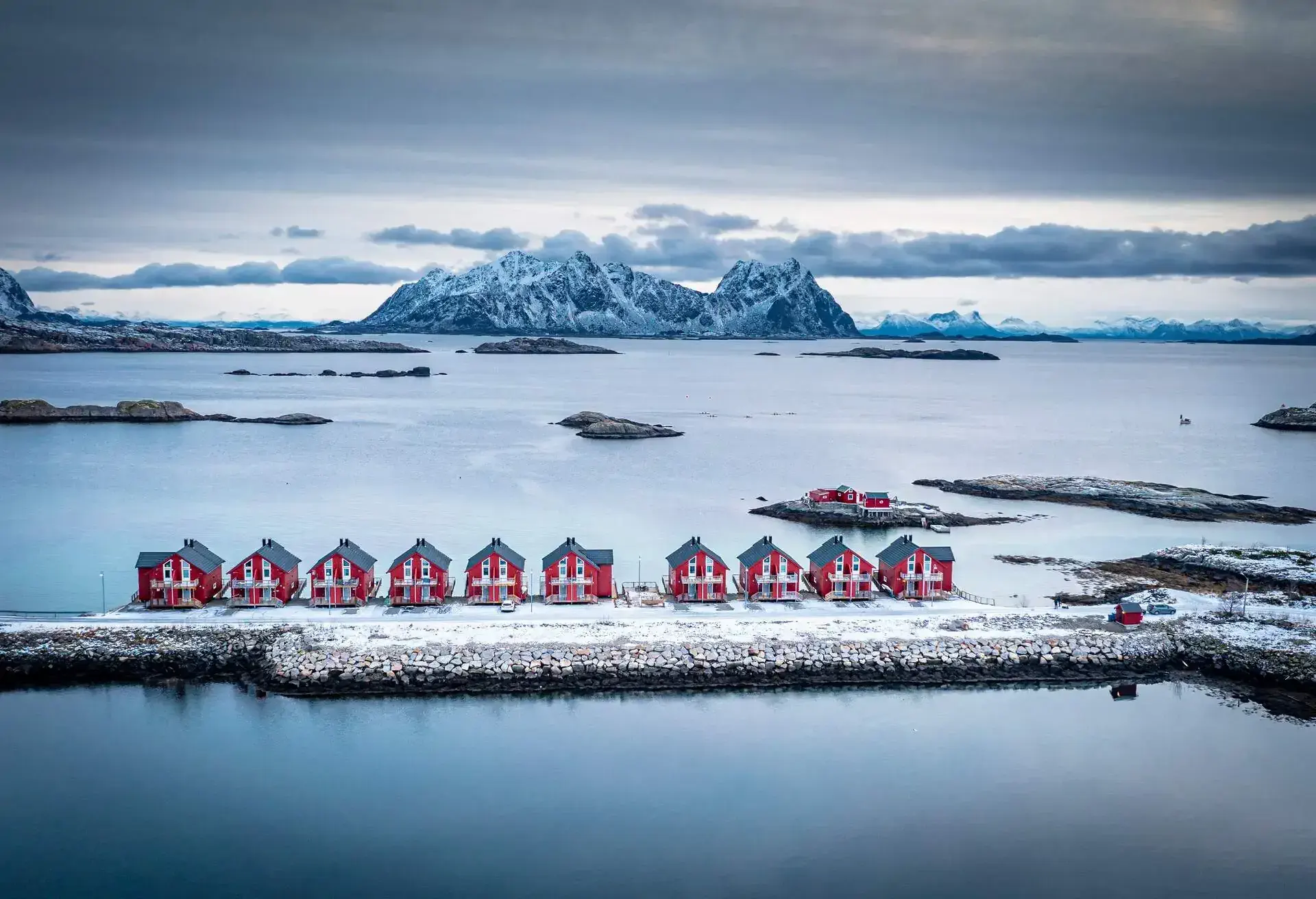
Norwegian food largely consists of what the sea has to offer. With one of the longest coastlines in the world and very clean waters, it’s easy to see why fish and seafood have become so popular in Norway.
Also read: How much hand luggage can I take on Norwegian Air? Everything you need to know
Fiskeboller: fish balls in white sauce
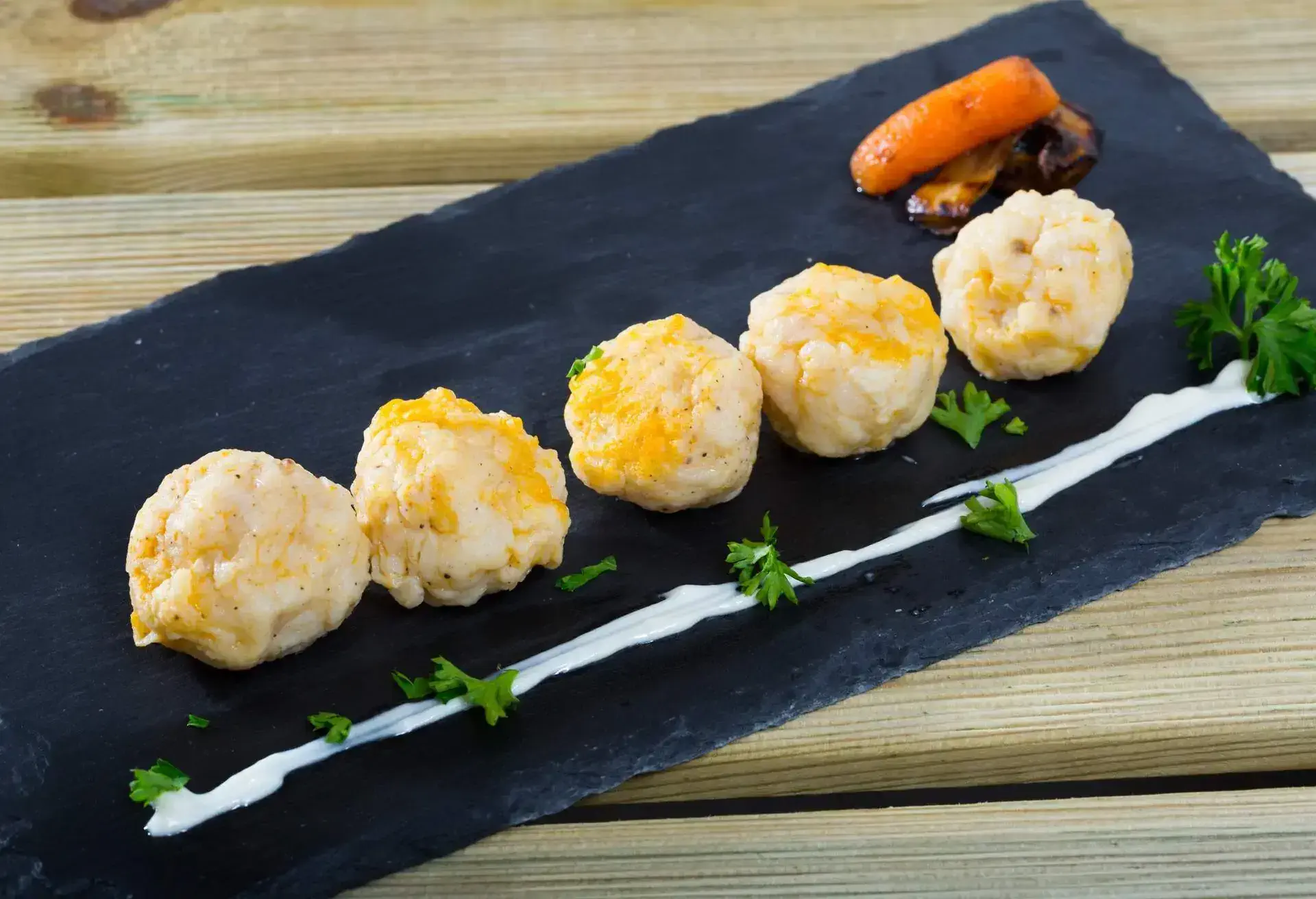
Fiskbullar is popular in both Swedish and Norwegian cuisine, and they share many similarities. Fiskeboller are traditionally oval-shaped balls made from fresh cod or haddock served in a white sauce.
The sauce is very simple, flavoured with nutmeg, and it’s typically served with boiled potatoes, crispy bacon, and grated raw carrots.
It’s said that polar explorer Roald Amundsen, known for crossing the Northwest Passage about 100 years ago, brought fiskeboller on his expeditions. Today, the fish balls are flavoured in all kinds of ways, including with curry.
Whale steak: steak of the sea
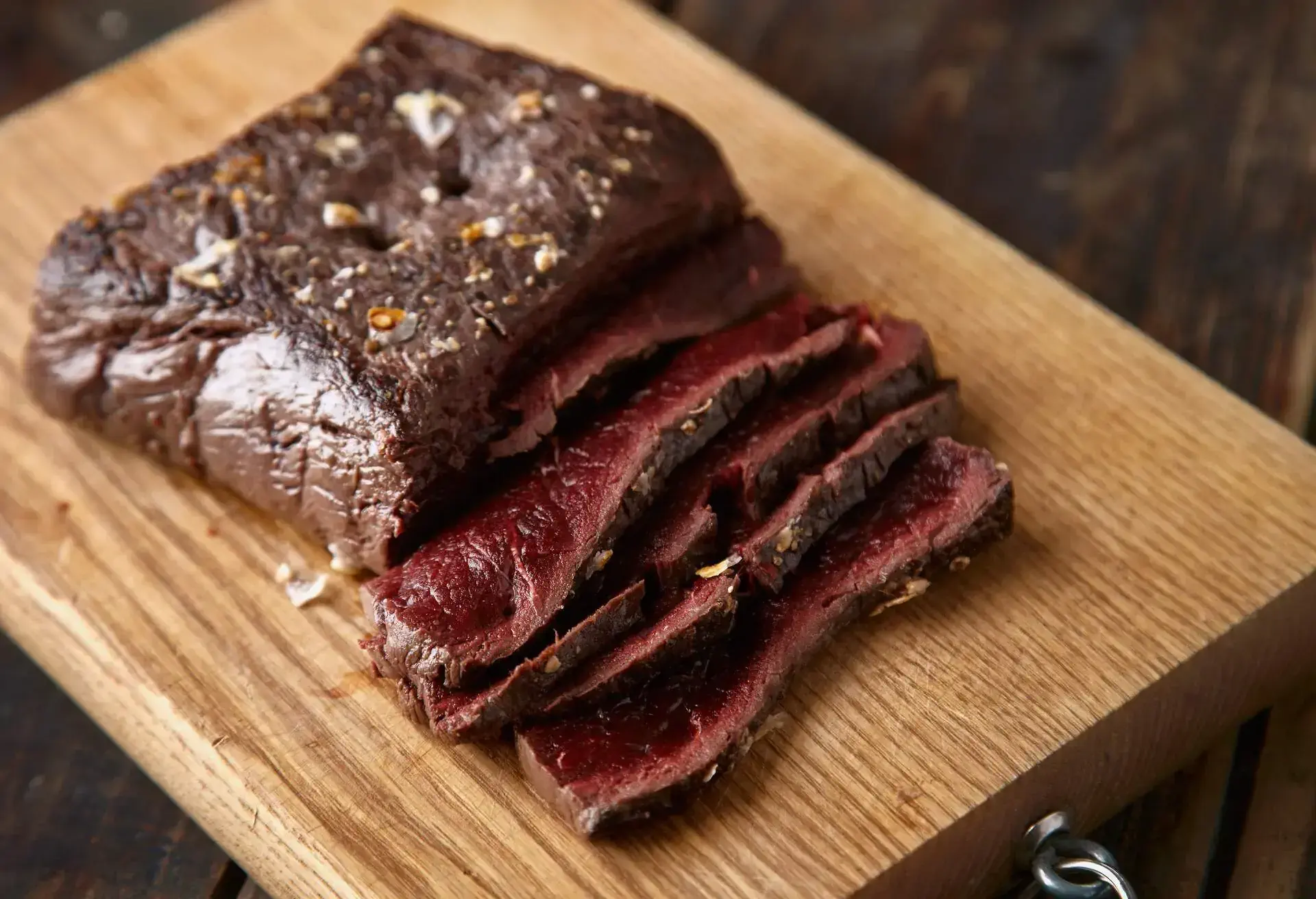
The farther north you travel in Norway, the more often you’ll find whale steak on the menu.
Whale meat was a staple for Norwegians for many years, especially when game meat was scarce. Today, it can be found in many of the country’s restaurants and harbour markets, and the reason it’s called meat/steak is that whale meat resembles more the meat of land animals than fish.
Norway has long regulated whaling. It’s estimated that about 100,000 whales live in Norwegian waters, and the annual quota allows for catching around 1,300.
That’s why this and other cities in Norway are among the few places in the world where you can try a steak from this colossal animal.
Salmon: the king of Norwegian food
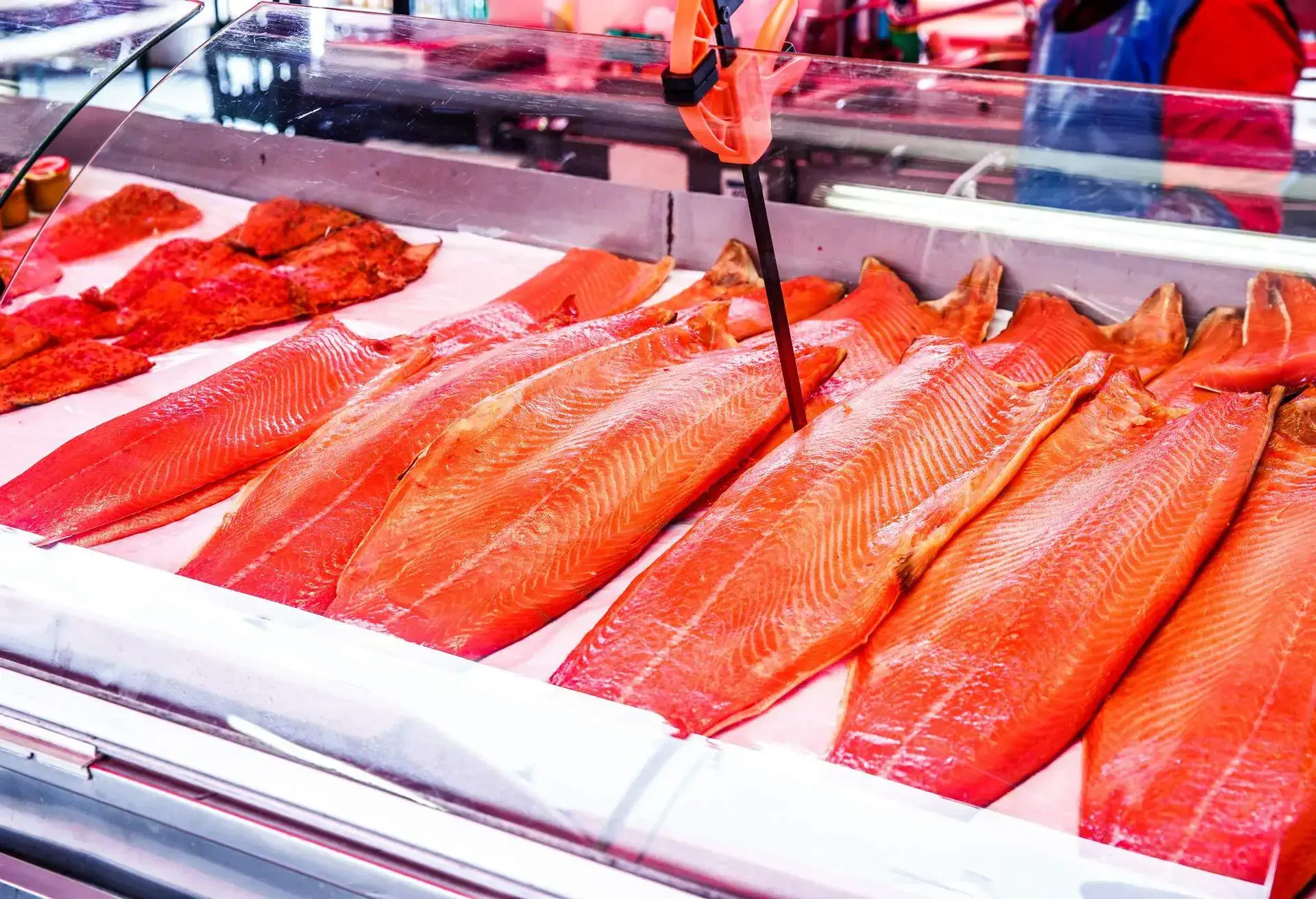
Norway was a salmon farming pioneer in the 1970s. Today, salmon raised in Norwegian fjords is known as the best in the world.
It’s also a major export. Norwegian salmon is shipped to more than 100 countries and is famous for its pure taste. Norwegians eat salmon in every possible way: fried, boiled, smoked, or cured.
Salmon could be considered the king of Norwegian cuisine and can be eaten for breakfast, lunch, a snack, or dinner. Sometimes it’s the main course, other times a side or part of a buffet, like in neighbouring Sweden.
The most common salmon dish is smoked salmon, but there are also other varieties. One example is gravlaks (cured salmon), which is cured in a salt and sugar mix for a few days and often seasoned with dill or other herbs.
Tørrfisk: an ancient dish
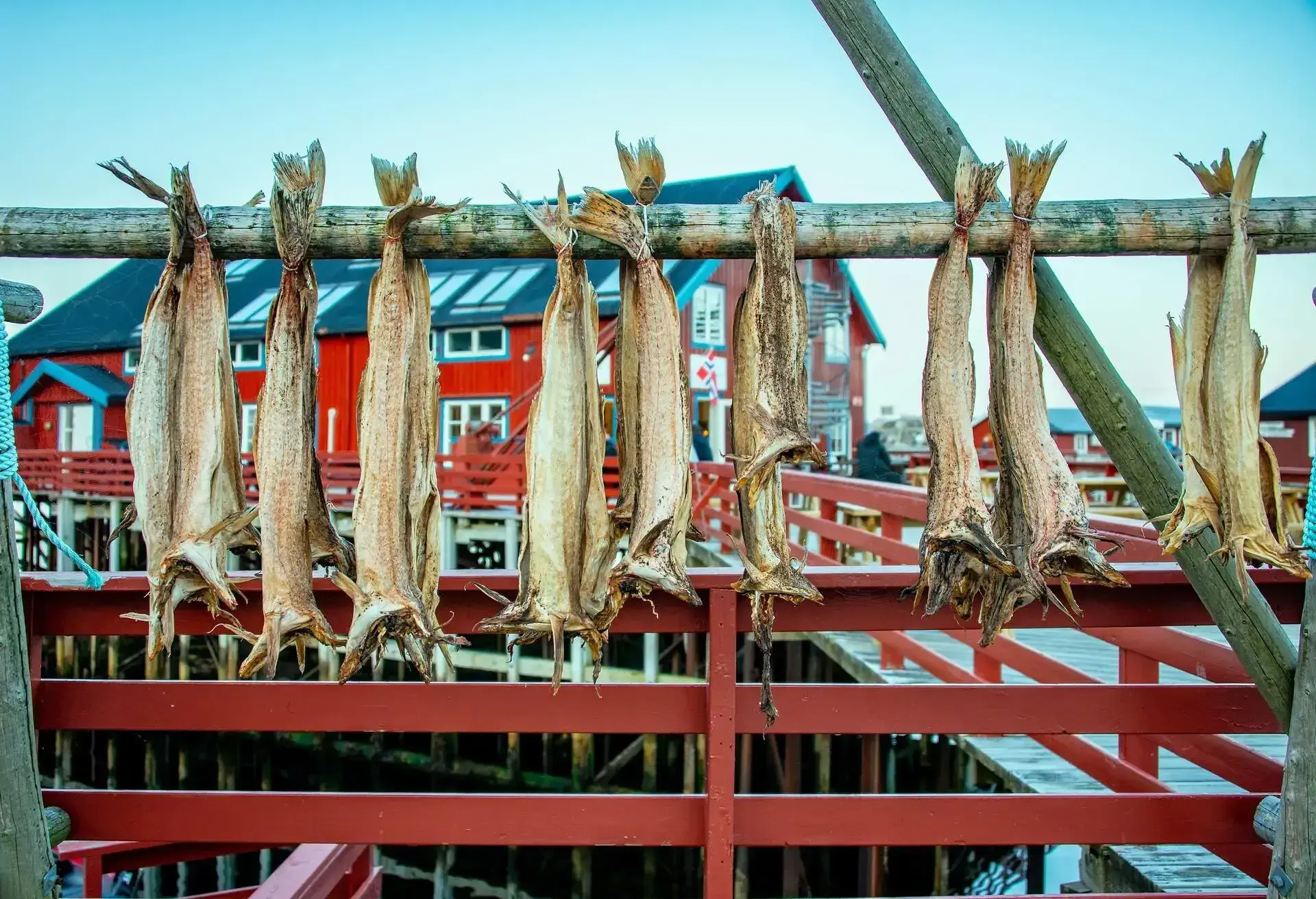
Tørrfisk is fish, usually cod, dried in the sun and wind.
It’s a Norwegian tradition that dates back to the 12th century, especially on the Lofoten and Vesterålen islands in the north of the country.
The word “torsk” (cod) comes from Old Norse, where “turskr” means dried fish. Tørrfisk played a fundamental role during the Viking expeditions and was taken along as provisions for long sea voyages.
King crab: a delicacy from the sea
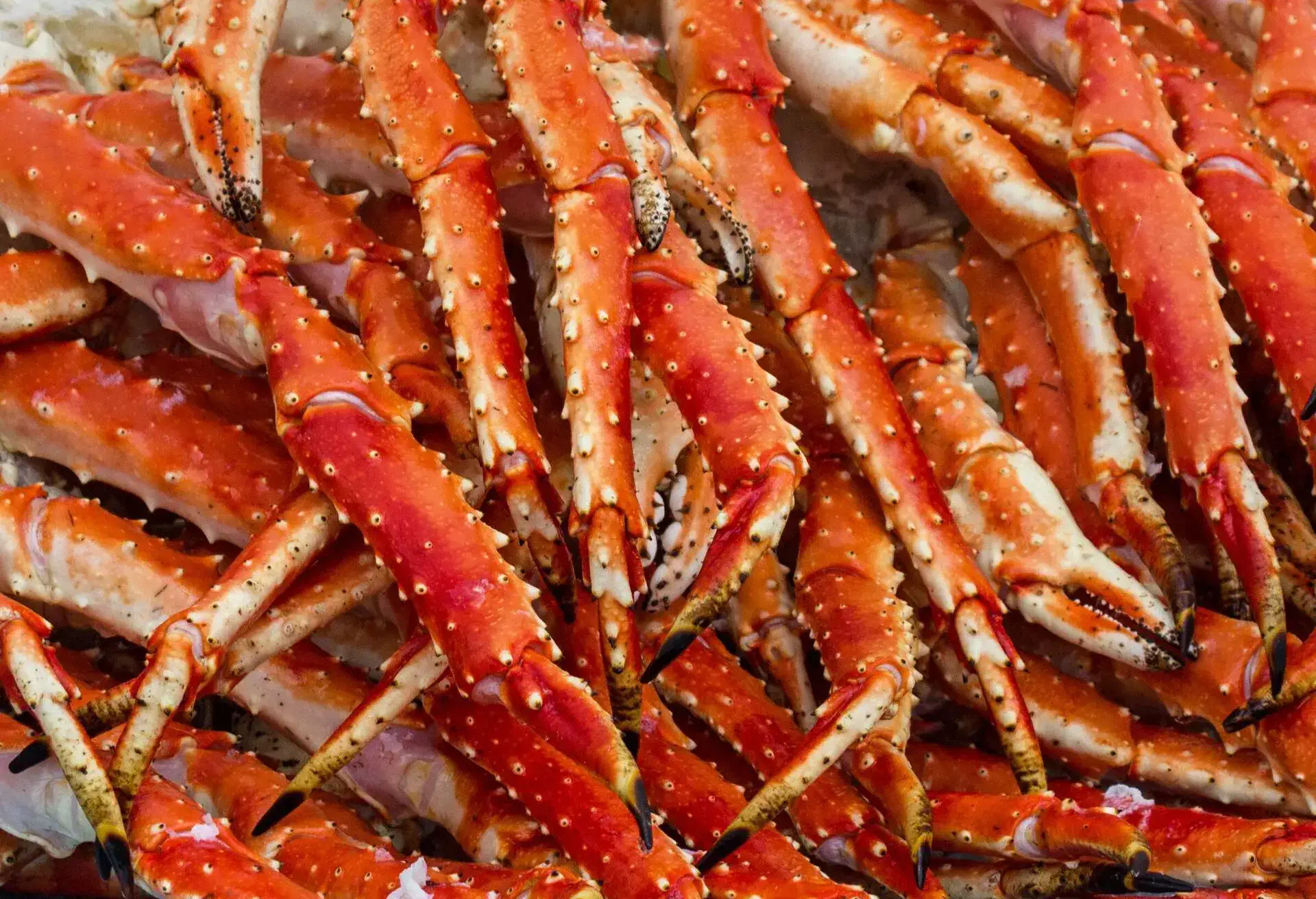
Along Norway’s long coastline, it’s not uncommon to find crab on restaurant menus. These king crabs are enormous and can weigh up to 10 kilos.
In some areas of northern Norway, there are even guided tours where you can catch your own crab and then enjoy it at the table.
It’s the crab’s legs and claws that are primarily eaten, as the inside of the shell is practically empty. Some enjoy the crab meat on skewers with vegetables.
Norwegian food from the land
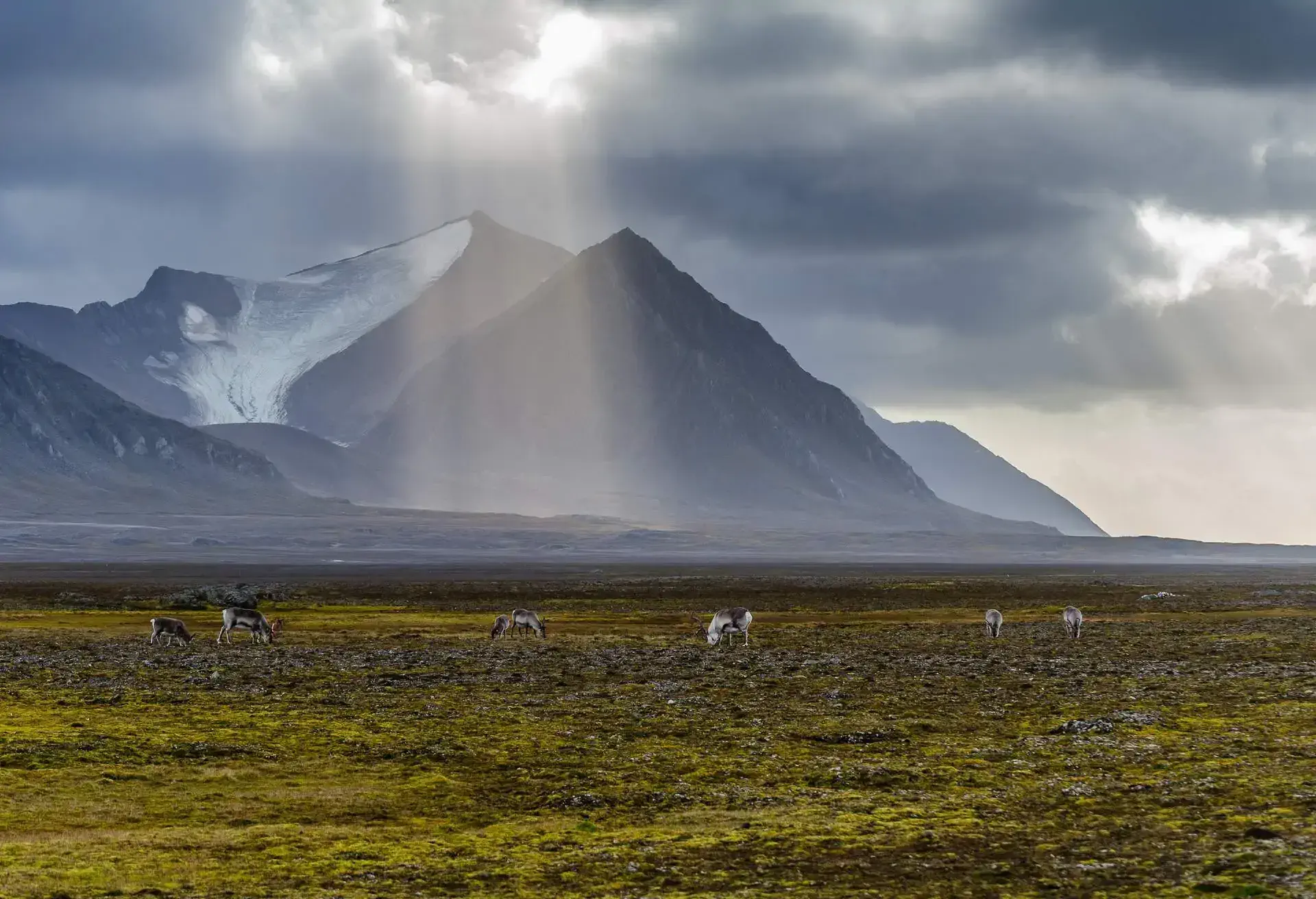
Although fish and seafood are the most common food in Norway, game and lamb are also widely consumed.
Kjøttkaker: Norwegian meatballs
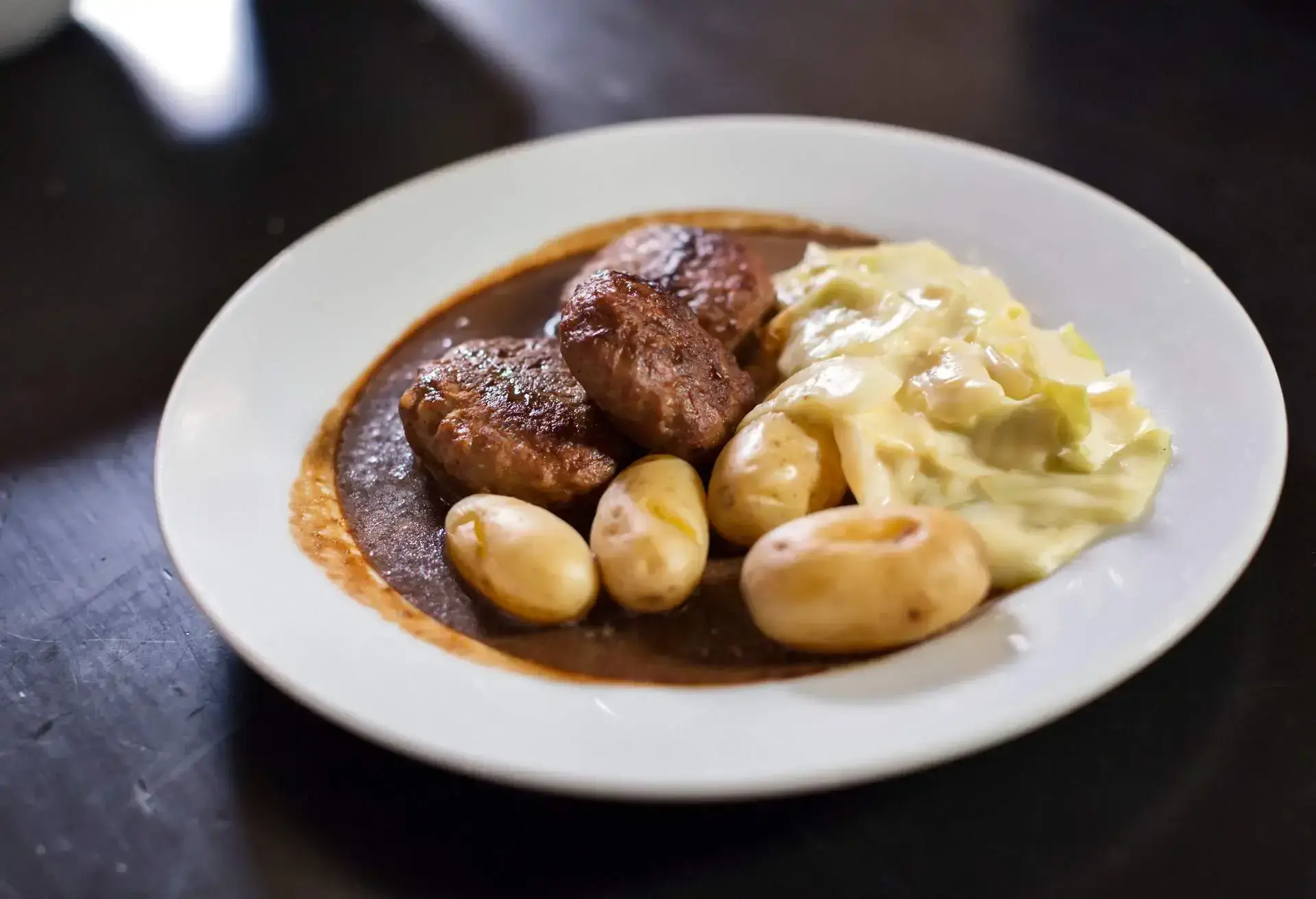
These meatballs are a much-loved Norwegian staple.
They’re shaped like a mix between patties and meatballs – slightly larger and oval in form. This typical Norwegian dish is simple and tasty, often served with gravy, boiled potatoes, and carrots or green peas.
In Norway, you’ll find kjøttkaker as a gourmet dish in restaurants, but it’s also cooked at home as an everyday meal – if you’re lucky, a local might serve it to you at home.
The meat is usually beef, but pork or lamb is also used. Hunters often use moose meat as well.
The ground meat is mixed with wheat or potato flour, and some add cornmeal, breadcrumbs, milk, and egg. The seasoning is usually mild, but many chefs like to experiment.
Lapskaus: meat stew in as many ways as there are cooks
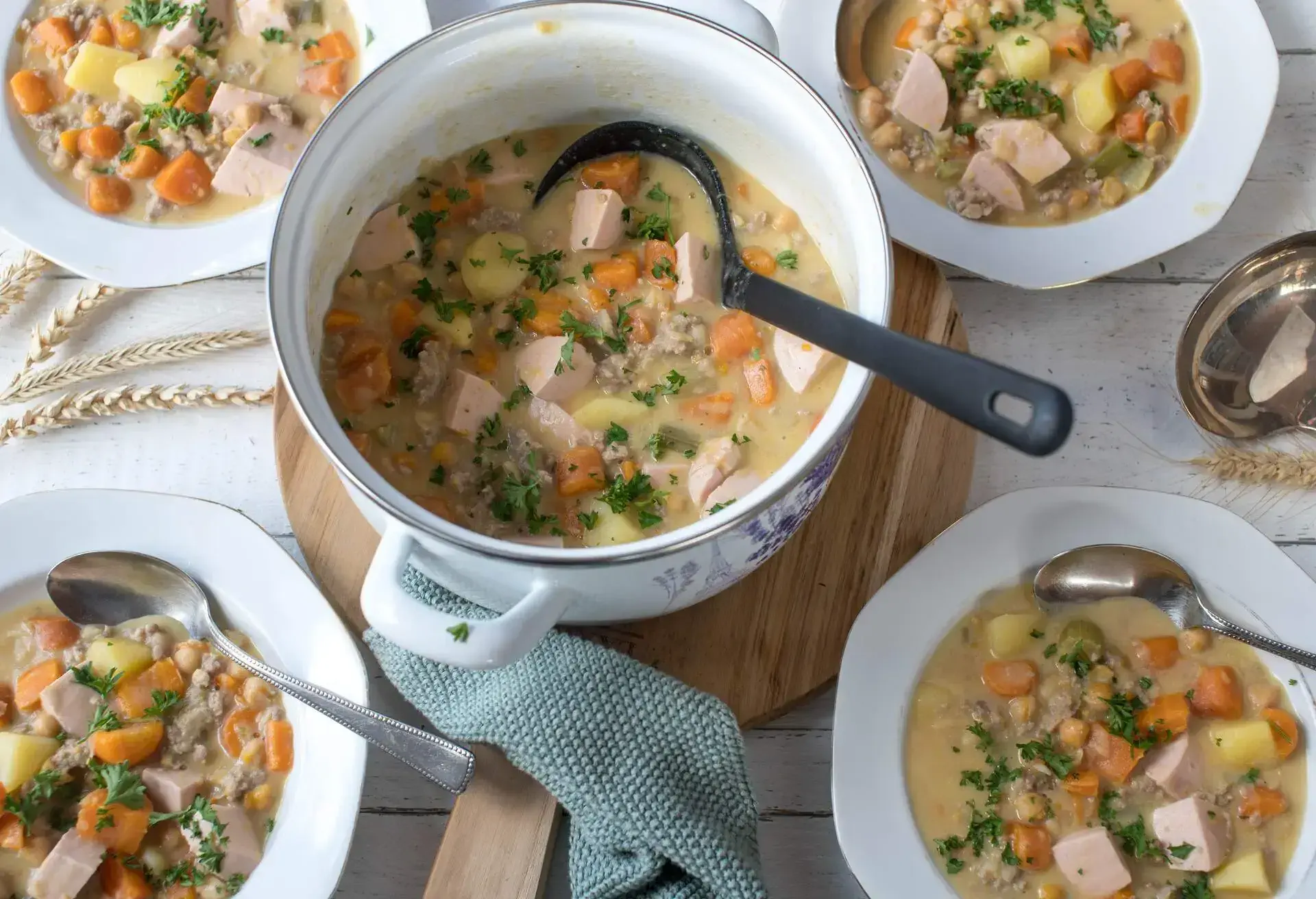
Lapskaus is a traditional Norwegian stew made with beef or lamb, root vegetables, and herbs.
There are also versions with pork and ham, and it can be made with fresh meat or leftovers.
The stew is made with carrots, onions, and celeriac and is eaten with bread. Like all stews, the recipe isn’t set – both preparation and ingredients vary depending on who’s cooking.
The finest and most expensive lapskaus is made with fresh beef, while the cheapest versions use leftover pork. Lapskaus is a warming stew, perfect for enjoying especially during winter.
Fårikål: Norway’s national dish
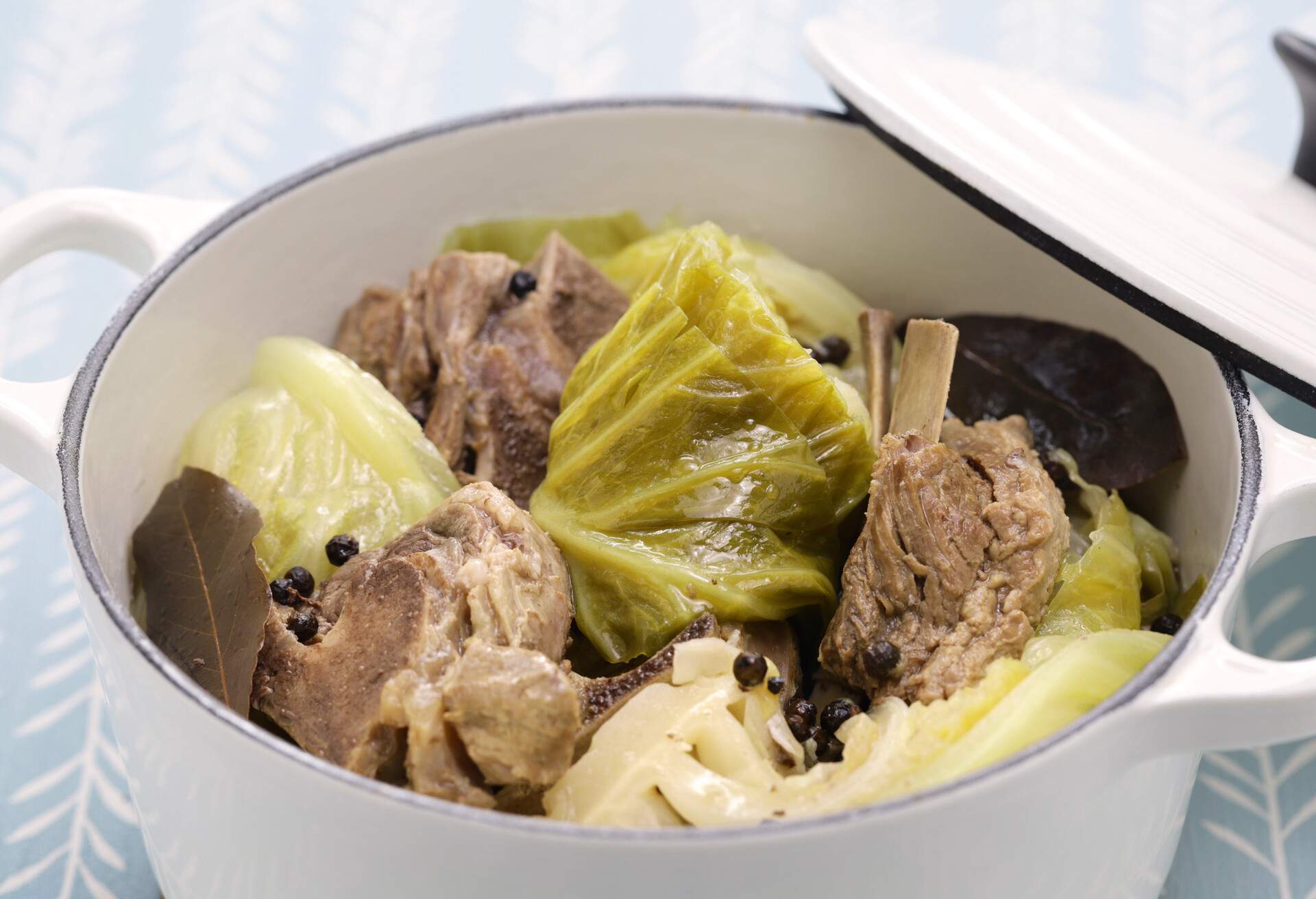
Fårikål is a Norwegian lamb and cabbage stew popular during the colder autumn and winter months. It’s traditionally made when fall begins and lamb slaughter season starts.
Fårikål is considered by many to be Norway’s national dish and even has its own day in the calendar – Fårikål Day is celebrated at the end of September each year.
The recipe originates from Vestlandet, a region bordering the Atlantic, and has since spread across the country.
The main ingredients, as the name suggests, are lamb and cabbage, and that’s pretty much the whole recipe. Add some boiled potatoes and you’ve got the complete dish.
Sodd: warming broth soup
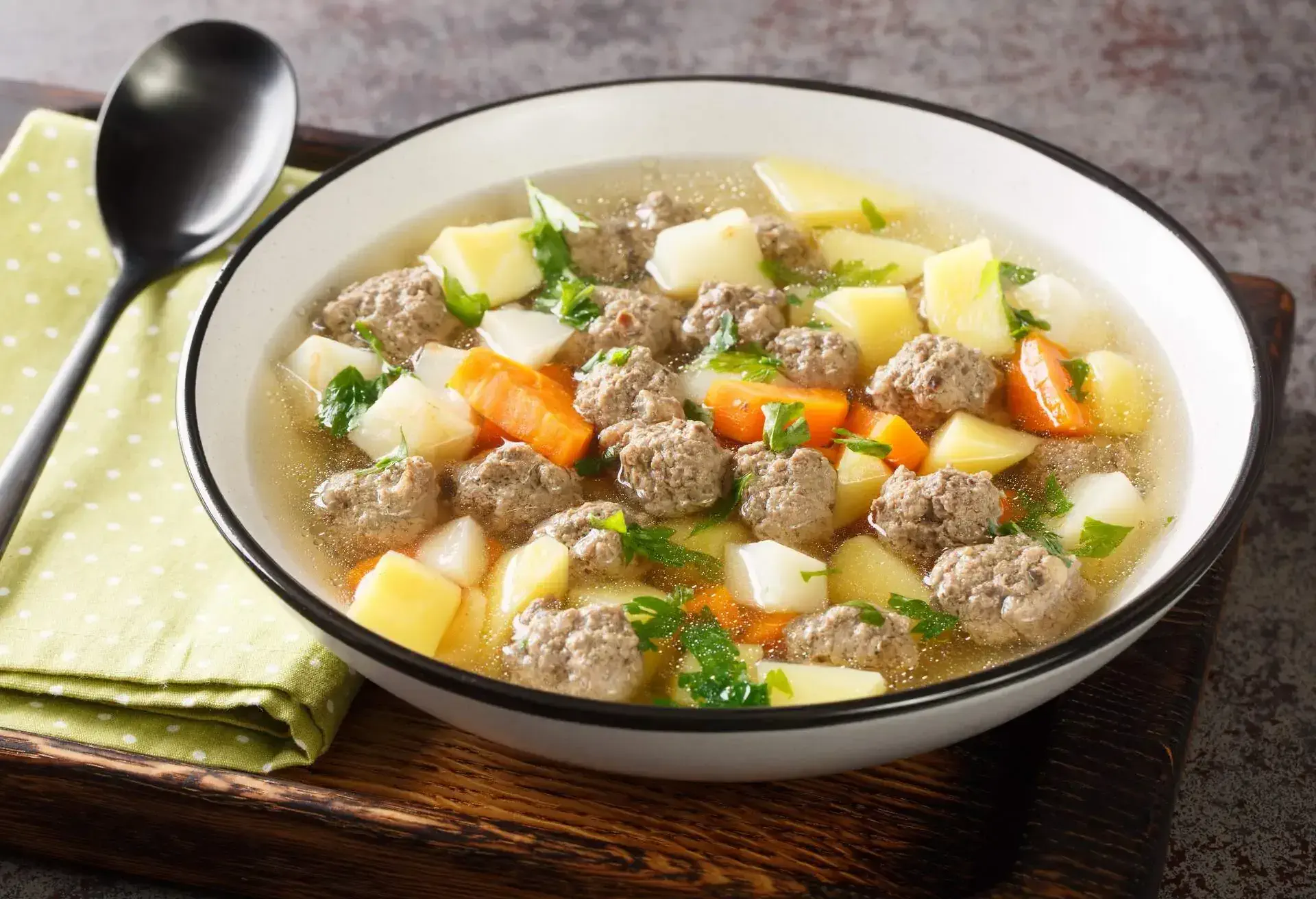
If you want to try some traditional soups in Norway, try sodd. It’s a meat soup with potatoes and carrots enjoyed both on regular days and for special occasions.
This clear soup traditionally includes meatballs made from lamb or beef. If you’re visiting Norway in the colder months, this hearty meal will definitely warm you up.
Also check out our guide for budget getaways to Europe for couples.
Finnbiff: Norwegian reindeer stew
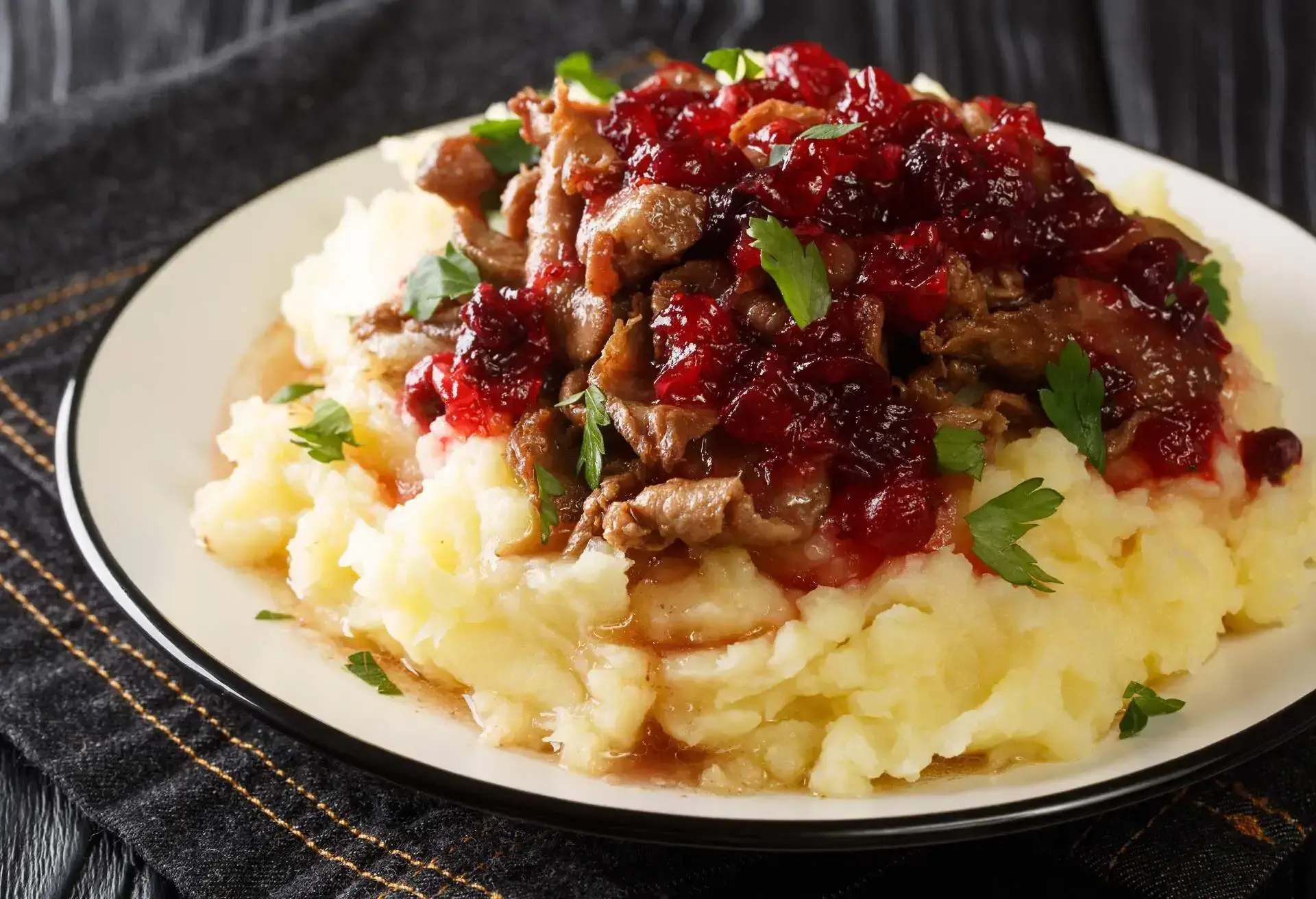
Finnbiff originates from the Lapland region of Norway, Sweden, and Finland. It’s also called reindeer stew.
What may seem exotic to many other countries is something we’re used to in Scandinavia – but don’t miss out on trying this dish in Norway.
Finnbiff is a delicious reindeer dish, often cooked with mushrooms and lingonberries, and is hands-down Norwegian cuisine’s most nature-inspired dish.
Classic Norwegian pastries and sweets
Let’s also explore the sweet treats served with coffee or as dessert in Norway.
Lefse: Norwegian flatbread
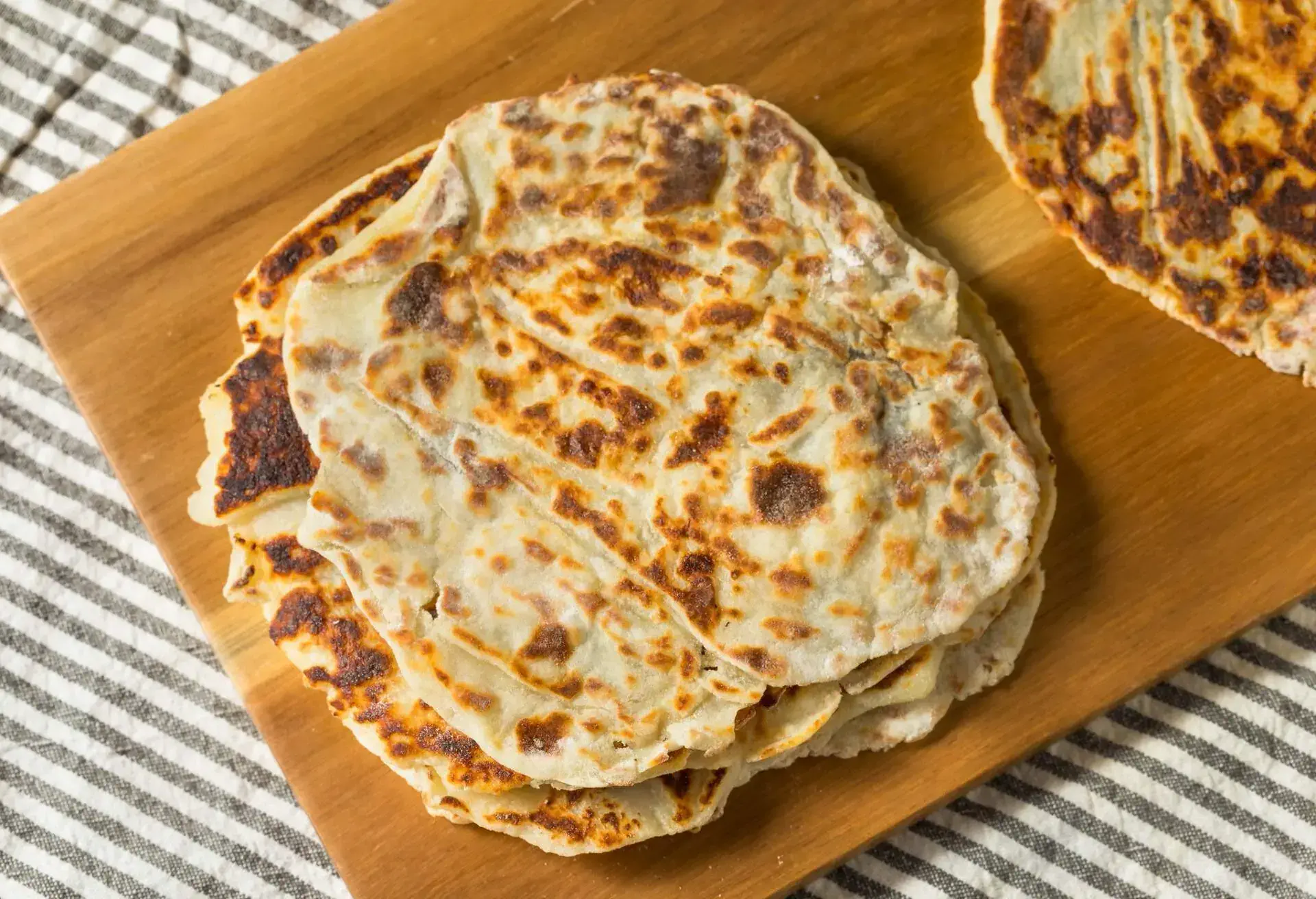
This simple flatbread is traditionally made during holidays like Christmas and New Year or for celebrations like weddings, though the method and ingredients can vary a bit.
First, you make a dough from which you roll balls that are flattened and then cooked in a large skillet. The dough is made from flour, potatoes, butter, and milk or cream.
They are prepared in a frying pan and require special tools to flip from one side to the other. When done, they’re typically eaten rolled up like a tortilla.
Over the years, a sweeter version called tynnlefse has also emerged. It’s the same bread but rolled with butter, sugar, and cinnamon, resulting in a soft and delicious dessert.
Krumkake
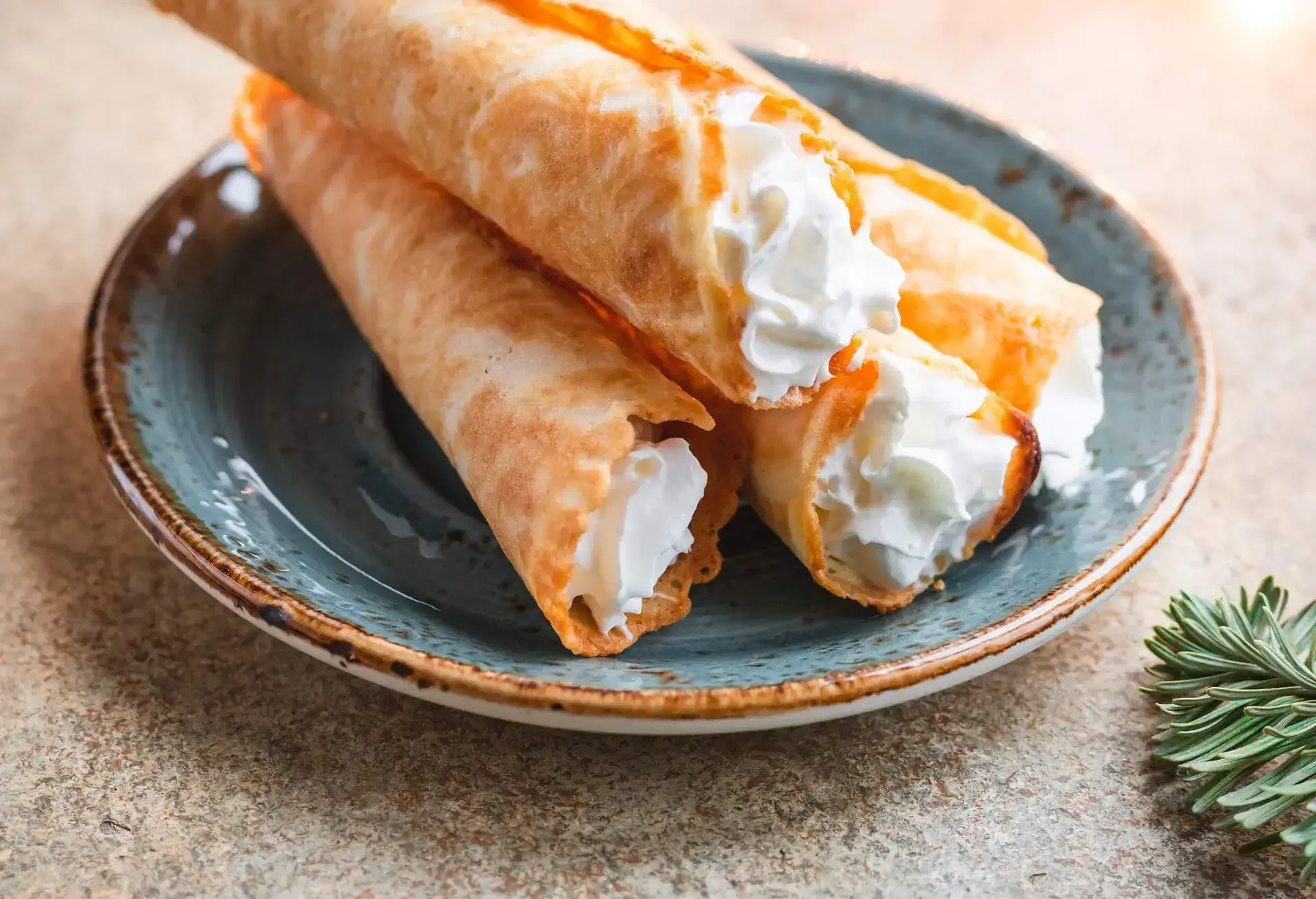
Norwegian krumkaker are crisp, sweet, rolled waffle cookies traditionally enjoyed in Norway during the holidays.
They’re made with a krumkake iron, similar to a waffle iron, which stamps a beautiful pattern on the waffle cones.
Today, these treats are made in various shapes depending on the intended use. Krumkaker can be shaped into cones, rolls, or bowls.
Skolebrød or skoleboller
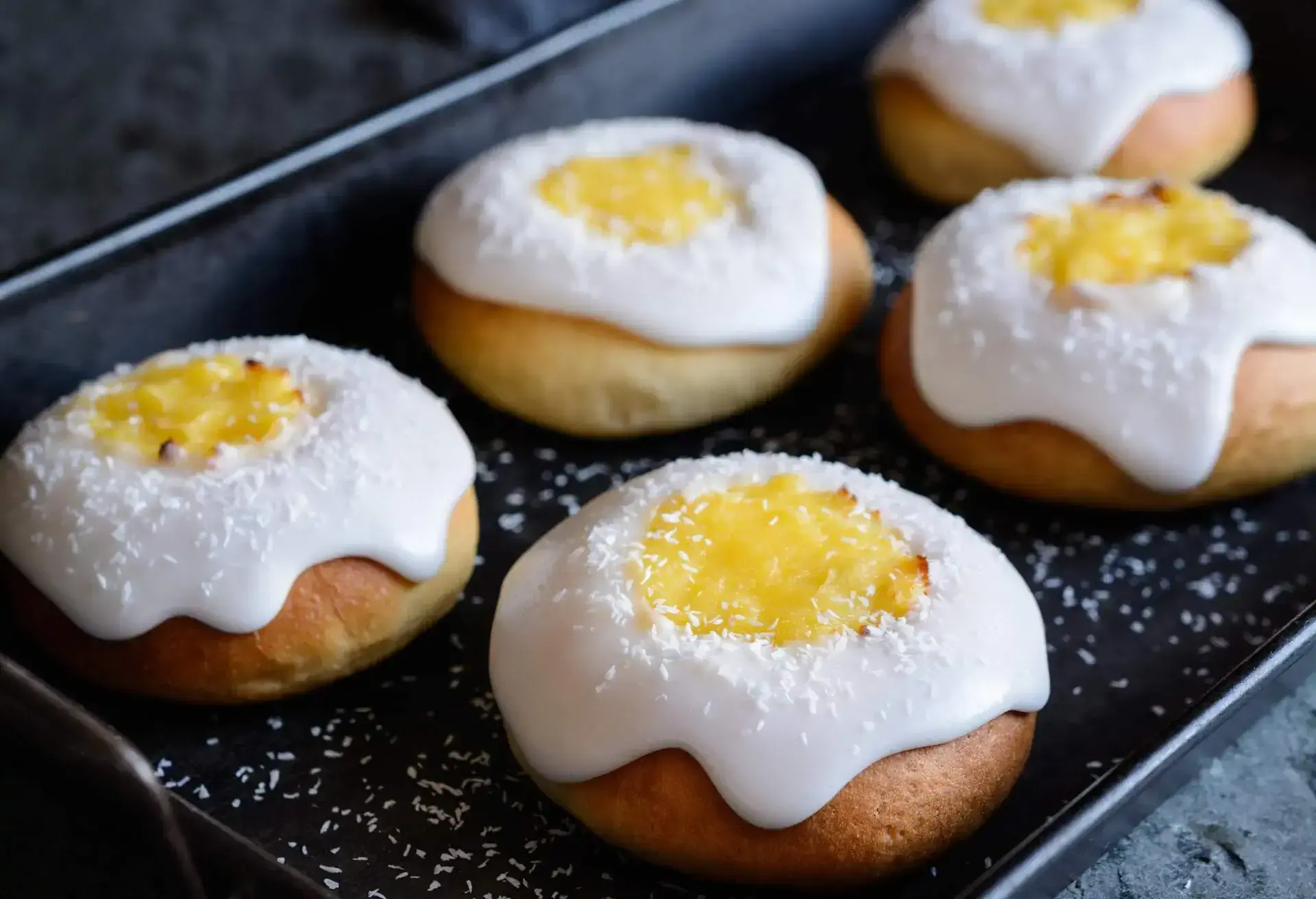
Skolebrød got its name because it used to be common for students to bring it in their school lunchboxes. It was – and still is – a classic bun baked for school cake sales.
The bun looks more like a filled doughnut than bread. It’s made by shaping sweet yeast dough into buns, filling them with smooth yellow vanilla custard, and baking them. Then they’re topped with icing and dipped in shredded coconut.
Today, it’s a popular fika treat – and who wouldn’t want to enjoy one or two of these delights?
Want more inspiration for your trip to Norway? Check out this road trip through Norway for unforgettable memories and a guide to driving abroad.

